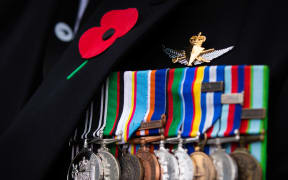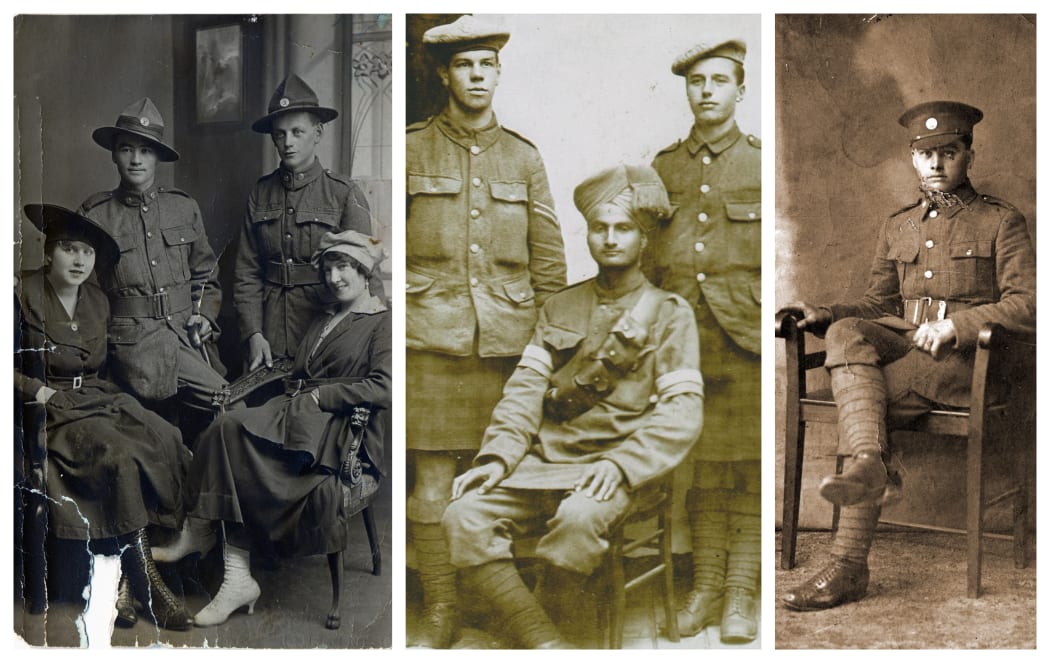
Photo: Supplied
New Zealand pauses on Thursday at Anzac Day commemorations nationwide to reflect on the atrocities of war, honour the dead and pay tribute to those who have been involved in military conflict.
Anzac Day marks the date that Australian and New Zealand troops landed at Gallipoli in 1915 during World War I.
Included in the New Zealand troops who are believed to have fought in the Dardanelles - estimates range between 8,000 and 18,000 - is a contingent of Indian and Chinese participants that has largely been neglected.
Narendra Bhana, president of the New Zealand Indian Central Association, says the contribution of Indian troops at Gallipoli has not been adequately documented.
"The exact number of Indians who served in World War I ... I am unable to find that information anywhere (in New Zealand)," Bhana says. "This is something that history doesn't record and it's a very poor exercise in my view.
"The Indian contribution has not been acknowledged as well as it should have been. ... It has not been recorded properly and recognized as it should have."
Richard Leung, chairman of the Auckland branch of the New Zealand Chinese Association, sees a similar pattern in terms of lacking awareness about the contribution of Chinese ANZACs at Gallipoli.
"The history of Chinese ANZACs was not known until the New Zealand Chinese Association, in conjunction with the Consulate General (of New Zealand) in Guangzhou, published the second edition of Chinese Anzacs by Alastair Kennedy," Leung says, referring to a title that was revised in 2015 three years after it was first published to include Chinese ANZACS of New Zealand origin.
"There was never any knowledge that there were Chinese ANZACs," he says. "Chinese history in New Zealand is very much not mainstream history. It was never taught, (and so) people didn't know until we published (Kennedy's) book - we found out there were Chinese ANZACs."
Discovering a Chinese and Indian legacy at Gallipoli
Peter Singh, 90, is the son of Santa Singh Johal, a Punjabi Sikh who enlisted in the 58th Vaughan's Rifles (Frontier Force) infantry regiment of the British Indian Army.
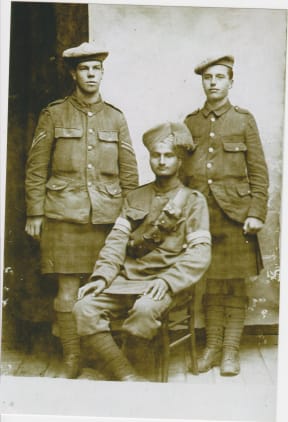
Santa Singh Johal (middle) poses for a photo with two members of the Scottish Black Watch. Photo: Supplied / Peter Singh
When World War I broke out, Johal was selected to serve in France before moving to the front lines in Belgium.
Singh says his father fought alongside British, French, Australian, Indian and New Zealand troops at Gallipoli. He was wounded in the leg attempting to land during the failed campaign and was evacuated to Egypt.
Singh's father remained in Europe alongside other Indian troops for peacekeeping duties once the war ended in 1918 before returning to India in 1919 and immigrating to New Zealand in 1920.
Settling in the Bay of Plenty, Singh's father married and established himself as an importer, furrier and condimental.
He passed away in Auckland at the age of 67, leaving behind three children. Peter Singh was his only son.
Singh says his father's participation in the Gallipoli campaign was never acknowledged in New Zealand, with the only documentation of his service being authored by Singh himself and donated to the Hocken Collections research library in Dunedin.
Singh believes the contributions of Indian troops at Gallipoli have been neglected.
"A number of them came and settled in New Zealand (and) became part of our community," he says. "Their history, to some extent, is also our history. They should be recognized."
Singh recalls that his father took great pride in his service as a soldier, while he is also extremely proud to be the son of an Indian soldier who was part of the Gallipoli campaign.
Singh is a member of the Royal New Zealand Returned and Services' Association and participates in the annual Anzac Day service at Pinesong Retirement Village in the West Auckland suburb of Green Bay, where he currently resides.
"When I was a boy, we used to go with my father to the Anzac Day ceremony at the (Auckland) Domain," he says. "This was always a very moving time (for him). ... He wore his war medals, which are now down in the Waiouru Army Museum. He was always very proud of being a soldier."
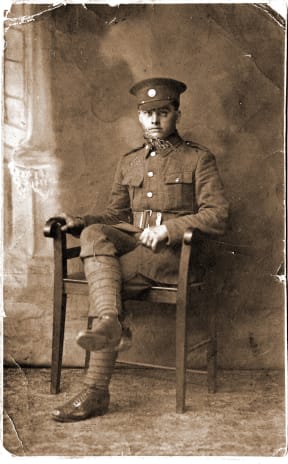
Herbert Stanley Sing was killed during the Battle of the Somme in World War I. Photo: Supplied / Felicity Sing
Felicity Sing also takes pride in being a descendant of four ANZAC brothers who hailed from mixed Chinese and Irish heritage.
Their father, William Ping Sing, immigrated from Hong Kong, while their mother, Francis Margaret Smith (also known as Frances Neary), was of Irish descent from a notable "fighting family".
Smith's grandfather is believed to have served in the Battle of Waterloo, while her father fought in the Crimean War. Other relatives served in the New Zealand Wars between some Māori tribes and government troops.
The four brothers - Herbert Stanley, Albert Victor, Robert Francis and Arthur Percy - continued the family's proud military tradition by volunteering to fight in Europe at the outbreak of World War I.
"Four Sing brothers went to war, but only three of whom returned home," Sing says, "Herbert Stanley Sing was wounded at Gallipoli. He was rehabilitated in hospital and sent back to the Battle of the Somme in 1916, where he sustained mortal wounds and died."
Herbert Sing is buried at Armentières Cemetery in France.
Herbert's surviving brothers were able to honour his memory by sharing stories of his courage upon returning to New Zealand after the war.
"The events of the night that Herbert died ... were quite detailed in that he bravely carried out his signalling duties whilst bleeding out," Sing says. "My grandfather, Albert, thought that his brother's actions ... prevented further fatalities from happening."
Sing's father, Mervyn, continued the family's military service to the country, fighting in the New Zealand Armed Forces during World War II.
"Needless to say, we are all very proud of their service and that of our father's service," Sing says. "The Chinese aspect in our bloodlines is fascinating to all our extended family, as we are proud of our ancestors and their bravery and devotion to their country."
Preserving history
To acknowledge the contribution made by Chinese and Indian New Zealanders in World War I, the Auckland War Memorial Museum unveiled a new section highlighting their efforts in April 2023.
Associate curator Gail Romano believes the display draws attention to the lesser-known side of Asian participation in New Zealand's military battles on the world stage.
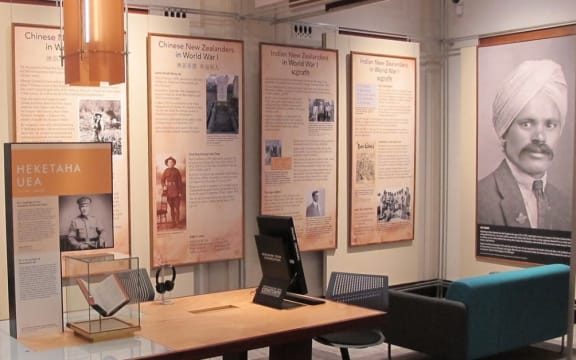
The Auckland War Memorial Museum has included a display acknowledging the contributions of Chinese and Indian New Zealanders in World War I. Photo: Supplied / Auckland War Memorial Museum
"We recognize that the participation in our country's Expeditionary Force by members of the New Zealand Chinese and Indian communities isn't well known, and it's not often told," Romano says. "So, the availability of these posters, when they were offered to us, allowed us to consider the possibility of being able to draw long, overdue attention to those commitments."
Bhana says the commemoration of Indian troops at Gallipoli at the museum represents a significant step forward in terms of preserving their stories for future generations.
"It's important that we recognize these forgotten heroes, by acknowledging diverse experiences and the contribution of all participants in historical events," Bhana says. "(This leads to) a more comprehensive understanding of the past and a deeper appreciation of the sacrifice made in the name of freedom, justice and peace."
Leung says Chinese immigrants have been living in New Zealand since the 1840s, and so the fact that Chinese personnel were involved in the ANZAC effort demonstrates to mainstream New Zealand that the Chinese community is an established part of Kiwi culture.
Moreover, he says, such history should be shared with new migrants.
"This history needs to be shared with the Chinese community - not just the old migrant community, but also the new migrant community to make them understand that Chinese have been in New Zealand for a very long time, and we can trace our community (back to) being ANZACs.
"We should be proud that Chinese ANZACs went and fought for the British Empire," he says.
Romano says the Auckland War Memorial Museum offers the online cenotaph that allows the public to search and identify New Zealand service personnel of Chinese and Indian descent.
Currently, 71 military personnel of Chinese descent and 17 of Indian descent have been identified as serving in both world wars alongside Entente and Allied forces.
However, the museum believes that many more have not been reported.



